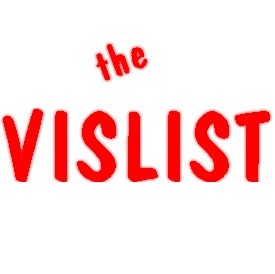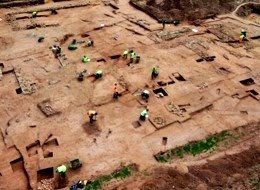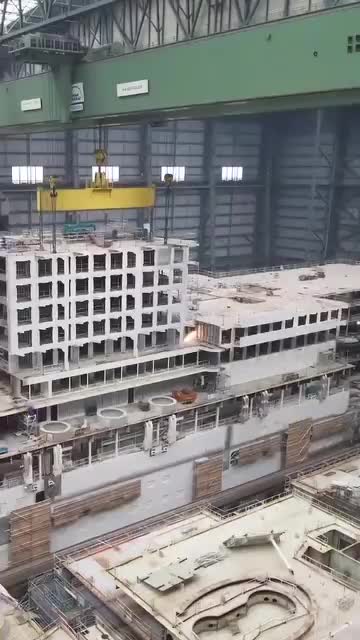Copy Link
Add to Bookmark
Report
VISION-LIST Digest Volume 12 Issue 28

VISION-LIST Digest Fri Jun 25 10:47:44 PDT 93 Volume 12 : Issue 28
- ***** The Vision List has changed hosts to TELEOS.COM *****
- Send submissions to Vision-List@TELEOS.COM
- Vision List Digest available via COMP.AI.VISION newsgroup
- If you don't have access to COMP.AI.VISION, request list
membership to Vision-List-Request@TELEOS.COM
- Access Vision List Archives via anonymous ftp to FTP.TELEOS.COM
Today's Topics:
Stereo Database
Optical flow programs and data
Geometric Hashing
Frame-by-frame image capturing
Multilayer HNN
Research posts in functional/parallel/vision project
TR: Image Analysis Using Parametric Models
A short course on Fuzzy Logic
Workshop: Shape Recognition in 2-D and 3-D Images
----------------------------------------------------------------------
Date: Thu 24 Jun 93 16:34:14-PDT
From: Bob BOLLES <BOLLES@ai.sri.com>
Subject: Stereo Database
People interested in stereo data ...
We recently transfered the JISCT database of 44 image pairs
(and a few example result files) to the Vision List Archive so that
anyone who's interested can access them. We collected these images
from JPL, INRIA, SRI, CMU, Teleos and the VAP Program sponsored by
CNES in France. In any published use of these images, please include
reference to this database and its contributors.
Included below is an example of how to access these images and
their associated documentation files.
If you have any problems logging onto the Teleos System or
accessing the Vision List Archive, please contact Phil Kahn at Teleos
(Vision-List-Request@TELEOS.COM).
If you have trouble reading the image files, please contact
Harlyn Baker (baker@ai.sri.com) or Bob Bolles (bolles@ai.sri.com).
We are interested in the number of people using the data, so
please send an E-mail message to Harlyn Baker (baker@ai.sri.com) when
you copy the database, stating your plans for using it.
If you have any suggestions for future stereo data
acquisitions or have data to contribute, please contact Bob Bolles
(bolles@ai.sri.com). Hopefully in the future we will be able to
supply more information about camera calibrations and ground truth.
... Harlyn Baker & Bob Bolles
Typical interaction sequence for getting the data and documentation files:
>ftp ftp.teleos.com
Name (ftp.teleos.com:baker): anonymous
Password: <use your username@hostname>
230 Guest login ok, access restrictions apply.
ftp> cd VISION-LIST-ARCHIVE/IMAGERY/JISCT
250 CWD command successful.
ftp> ls
README
images
jisct-reader.c
results
ftp> get README (copy the documentation file)
ftp> get jisct-reader.c (copy the C file reader)
ftp> cd images (access the images subdirectory)
ftp> binary (switches to binary transfer mode ... vs. ASCII)
ftp> prompt (toggles (turns off) verification request mode)
ftp> mget *.*.Z (get the compressed image files)
ftp> cd ../results (access the results subdirectory)
ftp> mget *.* (get the uncompressed result files)
ftp> quit
One then would
>uncompress *.*.Z (to uncompress the image files)
------------------------------
Date: Thu, 24 Jun 93 14:14:47 EDT
From: John Barron <barron@csd.uwo.ca>
Subject: Optical flow programs and data
David Fleet, Steven Beauchemin and myself have recently completed the
implementation of a number of optical flow algorithms (see CVPR 92 and
IJCV (in press)). These programs and our data were posted to
vision-list some time ago but since then we have made some changes to
3 of the programs (lucas.c horn.c and nagel.c) and some of the image
sequences. Hence, we often obtain better results than those reported
in CVPR or in a TR. If you are using any of these programs please make
sure you have the most up-to-date versions. A revised version of the
TR will be appearing soon. Anyone who has received a copy of the old
TR is automatically on the mailing list, otherwise please send me
email with your postal address if you wish a copy. The programs/data
are available as a tarfile consisting of compressed files. The
programs/data (as individual files) are also available from
ftp.csd.uwo.ca (cd /pub/vision).
------------------------------
Date: Wed, 23 Jun 1993 17:55:49 GMT
From: dutta@scorgies.NoSubdomain.NoDomain (Paul Dutta-Choudhury)
Organization: Cognex Corp.
Subject: Geometric Hashing
One of the more interesting model based matching algorithms to arise
in the past few years is the Geometric Hashing method. I've collected
a few of the relevant articles on this topic and am wondering if people
have actually implemented prototype systems using the technique. I
would be interested in hearing different viewpoints on the strengths,
and limitations of the technique. Specifically I am interested in the
2-D case with scale and rotation invariance, 3-D performance is
interesting but really isn't needed for the majority of current
industrial pattern location applications.
Paul D-C
Cognex Corp.
------------------------------
Date: Tue, 22 Jun 93 21:27:04 EDT
From: jdavis@eola.cs.ucf.edu (James Davis )
Subject: Frame-by-frame image capturing
I'm currently doing research in hand-gesture recognition and
need frame-by-frame digitized images as input to a computer
program.
At this time we, our setup is
camera/VCR -> SPARCstation w/ vfctool -> image => program on SPARC
This setup requires the user to manually digitize the frames
from the camera/VCR using vfctool. I'm looking for a unit that
will do this automatically, such as
camera/VCR -> unit -> frame-by-frame images => program on SPARC
Any information or comments is welcome.
Jim Davis
jdavis@eola.cs.ucf.edu
------------------------------
Date: Thu, 24 Jun 1993 16:03:21 GMT
From: uwechueo@cse.fau.edu (Okechukwu A. Uwechue)
Organization: Florida Atlantic University, Boca Raton, FL, USA
Subject: multilayer HNN
Can anyone direct me to where I can get some info on **multilayer**
higher-order neural nets ? I am researching HNNs for pattern
recognition,
thanks,
uwechueo@sol.cse.fau.edu
------------------------------
Date: Tue, 22 Jun 1993 13:17:54 GMT
From: greg@cee.heriot-watt.ac.uk (Greg Michaelson)
Organization: Dept of Computing & Electrical Engineering, Heriot-Watt
University, Scotland
Subject: Research posts in functional/parallel/vision project
Heriot-Watt University
Department of Computing and Electrical Engineering
Research Associates in Parallel Processing and Vision
Applications are invited for two SERC-funded Research
Associateships to work on aspects of rapid prototyping and
implementation of algorithms for image interpretation on multiple
instruction multiple data (MIMD) architectures. Although working
closely together, each RA will assume responsibility for a
specific programme. The first will concentrate primarily on the
software methodology, including functional specification and
instrumentation of algorithms in Standard ML and their
transformation into a parallel imperative language, OCCAM 2. The
other will undertake the development, optimisation and
implementation of algorithms for a cooperative multi-level, dual
source (depth, intensity) parallel system. The persons appointed
will join a lively research group working on several aspects of
computer vision and software development.
Applicants should have an honours or postgraduate degree in
Computer Science or a related discipline, together with relevant
postgraduate experience. The posts are tenable for three years,
commencing as soon as possible after the 1st October. The
starting salary will be in the range #UK 12,828(pt 3) to #UK 15,796
(pt 7) depending on age and experience. Enquiries should be directed
initially to the Staff Officer, Heriot-Watt University, Riccarton,
Edinburgh EH14 4AS, from whom further information and application
forms may be obtained. The closing date for applications is 31st
August 1993.
Informal enquiries may be directed to Andrew Wallace or Greg
Michaelson (tel. 031-451-3423/2, email - andy@ or
greg@cee.hw.ac.uk.)
------------------------------
Date: Wed, 23 Jun 1993 12:36:48 +0200
From: " (Franc Solina)" <franc@ninurta.fer.uni-lj.si>
Subject: TR: Image Analysis Using Parametric Models
Recently, Ales Leonardis defended his Ph.D. dissertation in computer vision
at University of Ljubljana, Slovenia.
Advisers were Franc Solina (Univ. of Ljubljana) and
Ruzena Bajcsy (Univ. of Pennsylvania).
Ales Leonardis
IMAGE ANALYSIS USING PARAMETRIC MODELS:
Model-Recovery and Model-Selection Paradigm
(Ph.D. dissertation in computer science)
ABSTRACT
The significance of detecting geometric parametric structures has long been
realized in the vision community. In this thesis, we present a reliable and
efficient method for extracting simple parametric geometric structures in
images, i.e., parametric surfaces in range images and parametric curves in
edge images. Unlike the approaches which attempt to solve the problems
in a single processing step using sophisticated means, we propose a method
which is an effective combination of simple component algorithms.
The method consists of two intertwined procedures, namely model-recovery
and model-selection. The first procedure systematically recovers parametric
models in an image creating a redundant set of possible descriptions,
while the model-selection procedure searches among them to produce an
optimal result in terms of the objective function.
The reliability of the recovery procedure which builds the parametric
models is ensured by an iterative procedure through simultaneous
performance of data classification and parameter estimation.
The overall relative insensitivity to noise and minor changes in input
data is achieved by considering many competitive solutions and selecting
those that produce the simplest description.
The selection procedure is defined as a quadratic Boolean problem, and
the solution is sought by the WTA (winner-takes-all) technique, which
turns out to be a good compromise between the speed and the accuracy
of the solution.
The presented method is efficient for two reasons: firstly, it
is designed as a search which utilizes intermediate results as a
guidance toward the final result, and secondly, it combines model
recovery and model selection in a computationally efficient procedure.
We have designed and implemented the proposed method which proved to be
successful for recovering parametric surface models in range images and
parametric curve models in edge images.
Key words: Bivariate polynomials, combinatorial optimization,
computer vision, curve fitting, edge images, edge image segmentation,
parametric models, quadratic Boolean problem, range images, range image
segmentation, regression updating, scene analysis, surface fitting,
surface modeling.
For more information and how to ftp a postscript file of the dissertation
please contact Ales Leonardis:
Ales.Leonardis@fer.uni-lj.si or ales@grip.cis.upenn.edu
------------------------------
Date: Wed, 23 Jun 1993 15:48:06 GMT
From: iiscorp@netcom.com (IIS Corp)
Organization: NETCOM On-line Communication Services (408 241-9760 guest)
Subject: A short course on Fuzzy Logic
Intelligent Inference Systems Corp.
Presents
Zadeh, Ruspini, Bezdek, Bonissone, and Berenji
On
Fuzzy Logic Inference Systems
A Five Day Short Course
San Francisco, CA
July 26-30, 1993
Introduced by Lotfi Zadeh, Fuzzy Logic methods may be used to
design intelligent systems utilizing knowledge expressed in natural
language. This methodology, an important source of artificial
intelligence applications, permits the processing of both symbolic
and numerical information, being particularly suited to the study of
systems known only in a vague, imprecise, and uncertain manner.
Fuzzy logic has been applied to control trains (Sendai subway),
elevators, household appliances, cameras, and manufacturing
processes. Systems designed and developed utilizing fuzzy-logic
methods have been shown to be more efficient than those based on
conventional approaches. In combination with Computational Neural
Networks techniques, fuzzy-logic methods may be used to design
robust adaptive control systems. This course discusses the
application of fuzzy logic and neural networks techniques to the
design of fuzzy and hybrid neuro-fuzzy systems. More than 14 case
studies will be discussed in detail. At the completion of this
course, you will have a full understanding of the benefits of this
technology, will know about existing successful applications, and
will develop the necessary understanding and knowledge to design
and apply fuzzy logic to your particular needs.
Who Should Attend:
Engineers, technical managers and project leaders, scientists,
systems analysts, as well as others who would like to have more
knowledge about this emerging technology.
About the course:
This is the strongest and most complete course
available on this topic. All the presenters of this course are
pioneers of the field, including Professor Lotfi Zadeh, who
introduced its seminal ideas and concepts. Even if you have already
taken a course or tutorial on fuzzy logic, you should try to attend
this course since it will provide you with a deeper understanding of
the latest techniques and applications in the areas of fuzzy logic,
soft computing, pattern recognition, intelligent control,
computational neural networks , and adaptive neuro-fuzzy systems.
Spend 5 days with the pioneers of Fuzzy Logic.
Course Outline
Day 1. Fundamentals of Fuzzy logic -- Enrique Ruspini
Day 2: Advanced Fuzzy Logic and Intelligent Control --
Lotfi Zadeh, Hamid Berenji
Day 3: Numerical Pattern Recognition -- Jim Bezdek
Day 4: Approximate Reasoning in Knowledge-based systems
-- Piero Bonissone
Day 5: Adaptive Fuzzy and Neural Network Systems --
Hamid Berenji
General Information
Registration Fee:
$1395 Includes tuition, a full copy of the notes, and
refreshments during the morning and afternoon breaks
$1295 For teams of three or more from the same organization.
A $75 processing fee is charged if registration is cancelled before July 2,
1993. No refund after July 2, 1993 but substitution is allowed at all
times.
Location and Accommodation:
The course will be held at the beautiful hotel Sofitel. Please
arrange accommodation directly with the hotel. Special rates are
available by mentioning "IIS Corp. Fuzzy Logic Course".
Hotel Sofitel San Francisco Bay
223 Twin Dolphine Drive
Redwood City, CA 94065
Telephone: (415) 598-9000 X-6201
For further info, please contact:
Intelligent Inference Systems Corp.
P.O. Box 2908
Sunnyvale, CA 94087
Fax: (408) 730-8550
email: iiscorp@netcom.com
------------------------------
Date: Tue, 22 Jun 93 11:48:32 BST
From: C A Gill <sta6cag@leeds.ac.uk>
Subject: Workshop: Shape Recognition in 2-D and 3-D Images
FINAL NOTICE FINAL NOTICE FINAL NOTICE FINAL NOTICE
13TH LEEDS STATISTICAL RESEARCH WORKSHOP
JULY 12 - 14, 1993
SHAPE RECOGNITION IN 2-D AND 3-D IMAGES
KEYNOTE LECTURES
Professor Josef Kittler, University of Surrey, UK, will present a
paper on parametric shape detection based on robust statistical
hypothesis testing with applications in computer vision and image
analysis.
Professor Michael Miller, Washington University, Missouri, USA, will
give two talks on jump-diffusion processes for inferring 1, 2, and 3-D
shape as used in electron microscopy and automatic target tracking and
recognition.
OTHER CONTRIBUTIONS
Dr Tim Cootes, Wolfson Image Analysis Unit, Manchester University
Dr Ian Dryden, Statistics, Leeds University
Dr Nick Efford, Computer Studies, Leeds University
Professor Colin Goodall, Statistics, Penn State, USA
Dr Simon Hesketh, Wheatstone Labs., King's College London
Professor David Hogg, Computer Studies, Leeds University
Dr Andreas Lanitis, Wolfson Image Analysis Unit, Manchester University
Professor John Marchant, SILSOE, UK
Professor Kanti Mardia, Statistics, Leeds University
Dr Steve Maybank, G.E.C., UK
Professor Michael Smith, Centre for Medical Imaging, Leeds University
Professor Michael Werman, Computer Science, Hebrew University of
Jerusalem, Israel
POSTER DISPLAY HANDS-ON SUN WORKSTATIONS
TIMETABLE Monday 1.00 p.m.(registration) - Wednesday 4.00 p.m.
REGISTRATION FEE : 78 pounds (students 58 pounds)
The workshop will be held in Fairbairn House, part of the University of
Leeds campus, and which offers conference and associated facilities to a
high standard. Fees include lunch on Tuesday and Wednesday, light
refreshments,car parking and course material.
CONFERENCE DINNER (Tuesday): 12.50 pounds (payable with registration fee).
Fees should be paid in advance, cheques payable to UNIVERSITY OF LEEDS.
ACCOMMODATION in nearby hotels at reasonable prices can be arranged
if required. Individuals must settle their own accommodation expenses.
If you would like to attend the workshop then for more details
contact Dr. Christine Gill, Department of Statistics,
University of Leeds, Leeds LS2 9JT.
telephone - Leeds (0532) 335157 email - sta6cag@uk.ac.leeds.gps
CLOSING DATE FOR BOOKINGS - FRIDAY 25TH JUNE 1993
SHAPE RECOGNITION IN 2-D AND 3-D IMAGES 12 - 14 JULY 1993
REGISTRATION FORM Please detach and return to Dr C. A. Gill, Department
of Statistics, University of Leeds, Leeds LS2 9JT.
NAME:............................... Fee enclosed(pounds)
ADDRESS:............................... 78 or 58 ....
............................... Dinner 12.50....
............................... TOTAL....
Please tick if you require:-
conference dinner...... vegetarian menu......
car park space...... sandwich lunch on Monday......
If accommodation required, please indicate
Monday night.... Tuesday night.... en suite.... price range......
------------------------------
End of VISION-LIST digest 12.28
************************





















